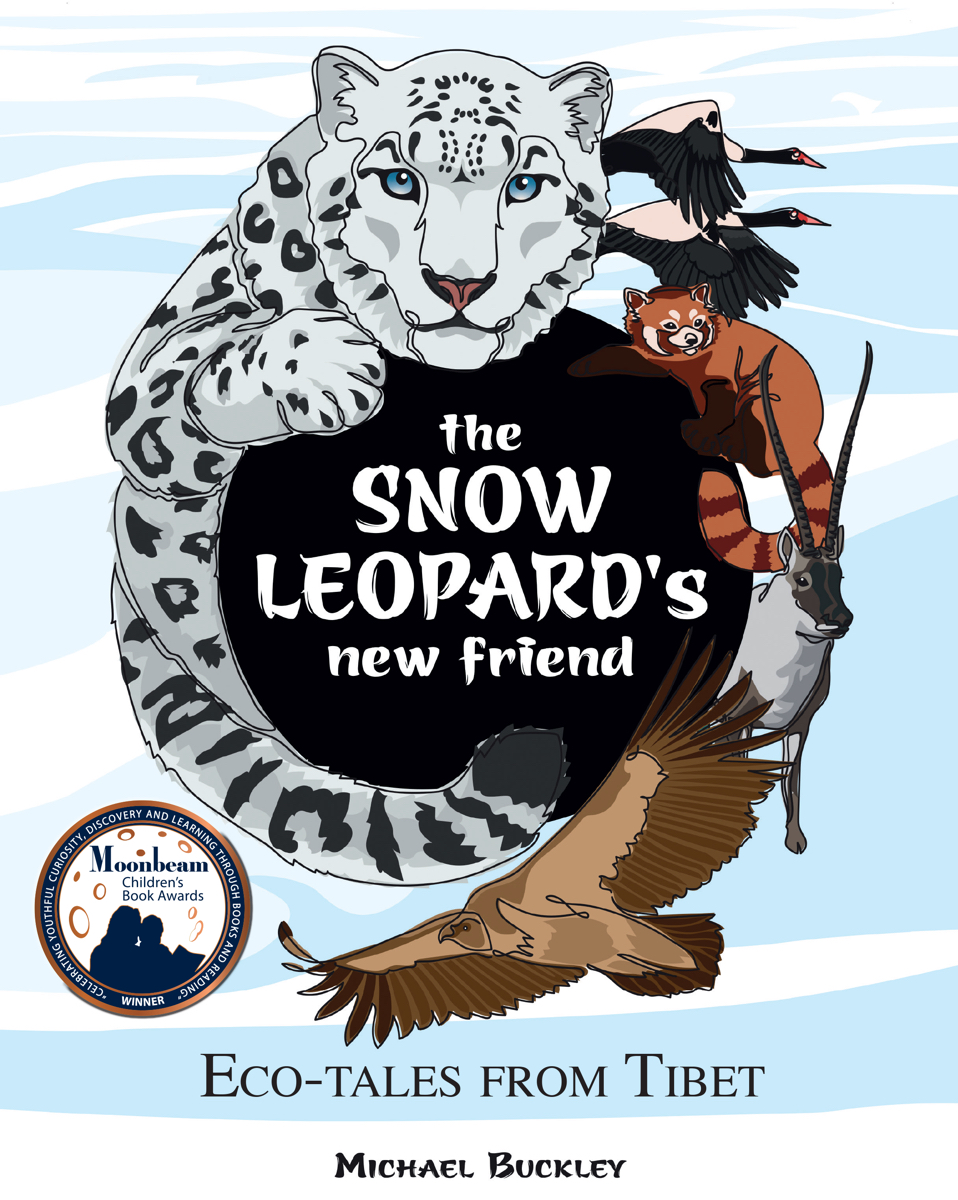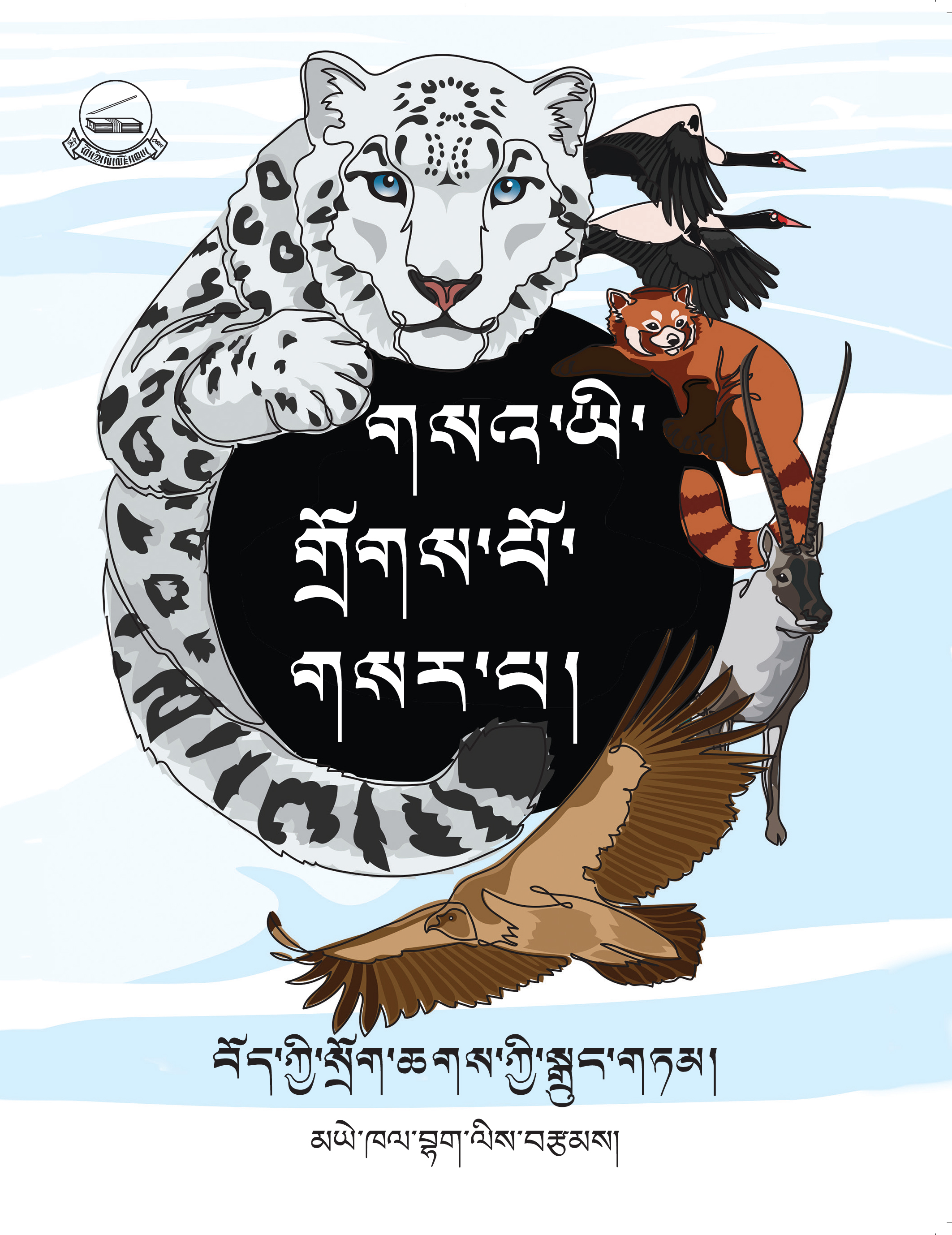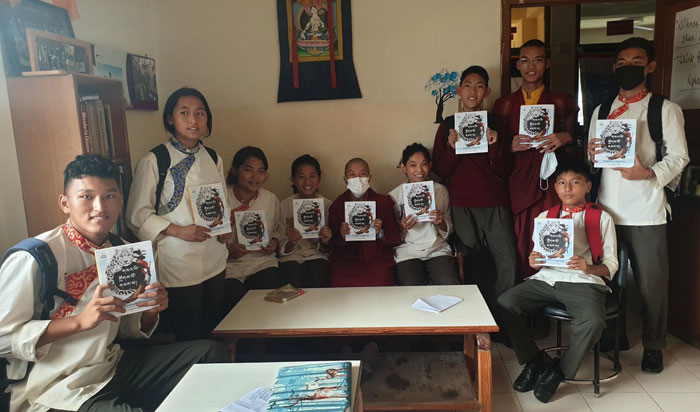
People loving the book Eco-tales from Tibet
Which one is your spirit animal?
By Michael Buckley
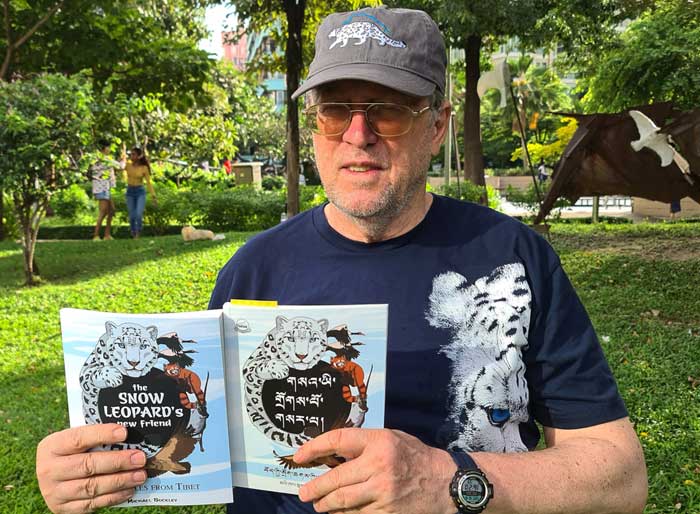
Ten years ago, I was invited to a meeting of the Elephant Society in Hong Kong. This conservation group, supported by well-heeled patrons, had much work to do. Hong Kong is the epicenter of the trade in ivory—a trade that is sending elephants hurtling toward extinction. Life-sized elephant photos graced the walls of the venue. That night, the speaker was the seasoned wildlife activist Dr. Jane Goodall, who was in her eighties.
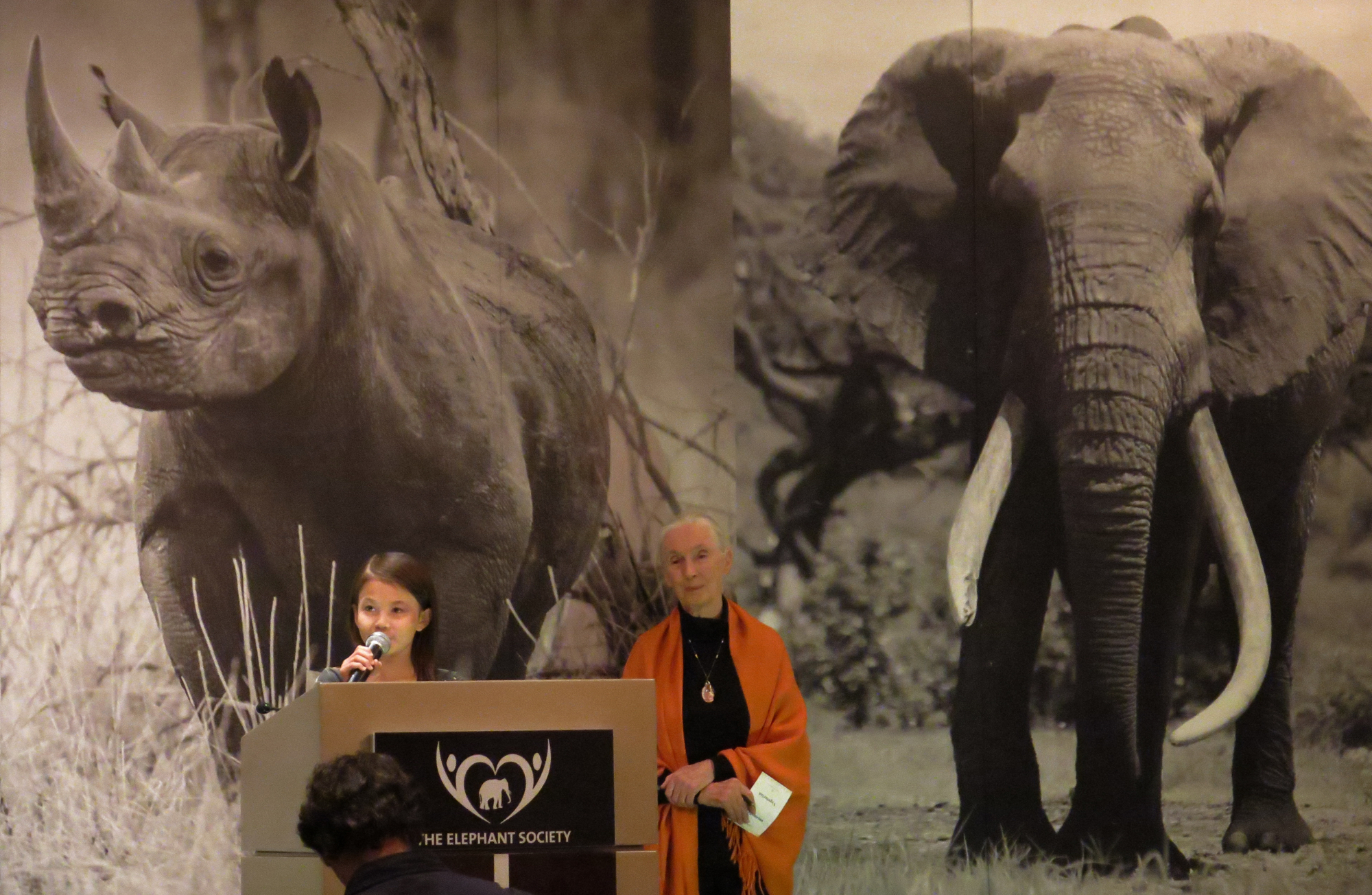
Standing next to her, barely peeping over the podium, was an eight-year-old elephant activist. Eight years old! Jane Goodall explained that no one had pushed this girl into activism. She simply saw a program on TV about poaching elephants for their tusks and turned to her parents, saying: That’s not right. That is so wrong!
The young girl gave a passionate short speech about how she wants to grow up in a world where she could see wild elephants. With tusks on them. Such magnificent creatures. There was not a dry eye in the house. Donations rained down. And I was so inspired that I decided that night I would write a children’s book. I believe that youth like that hold the key to saving the planet. They are fearless. And they have a long activist life ahead of them.
The Elephant Society of Hong Kong had a very exclusive membership (that was back in 2014, not sure about today). I wrangled my way in via the Royal Geographic Society (RGS), where I was presenting on Tibet. The RGS said I would be allowed to attend the Elephant Society event if I gave a presentation about the environment at a middle school in Hong Kong. I gave a talk about the water crisis in Asia, stemming from Tibet.
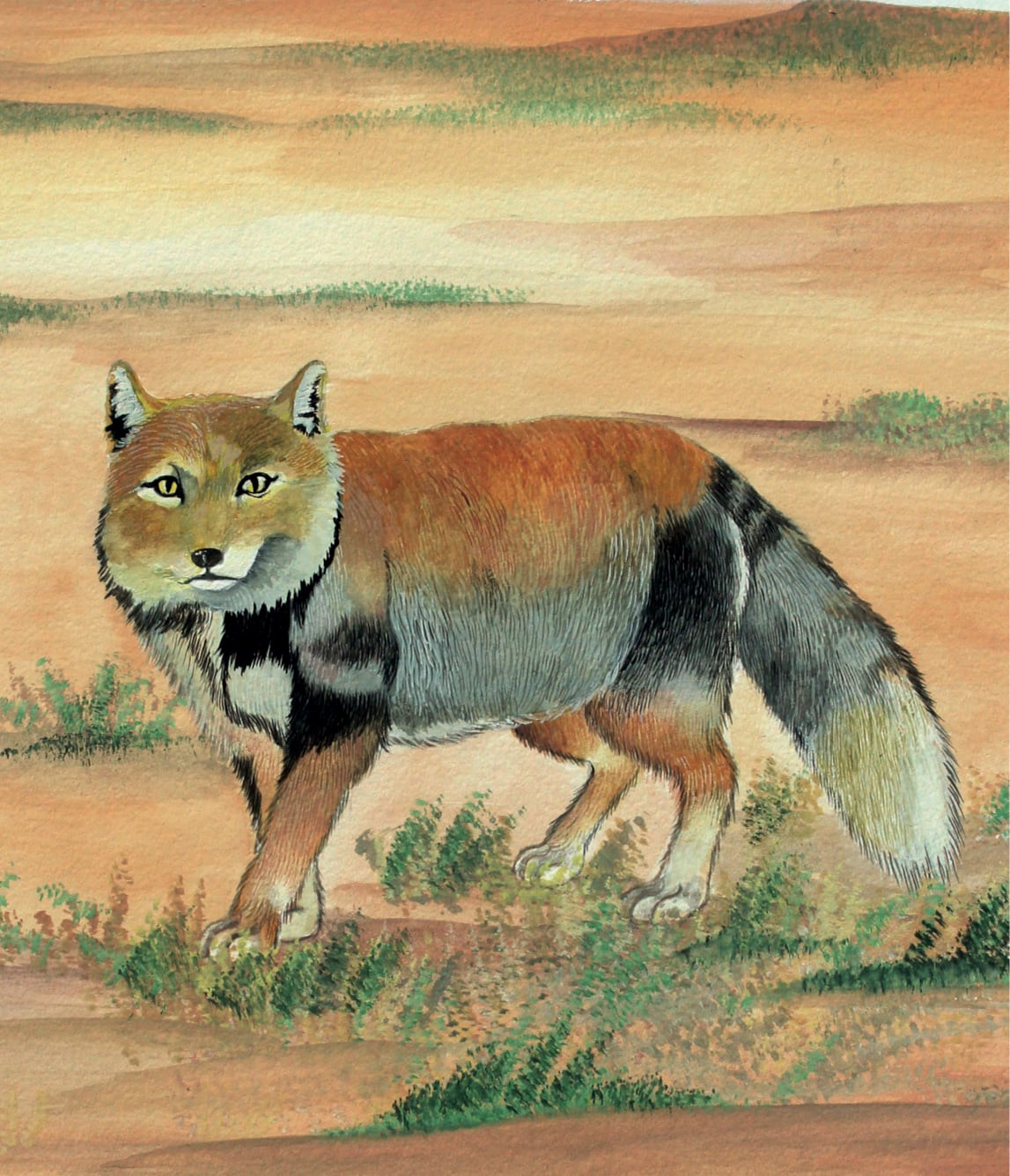
Tibetan-SandFox
The reception for the talk was enthusiastic, and I got lots of interaction going by asking questions. The kids were very keen to learn more. This got me thinking further about writing a children’s book about Tibetan animals. I had never seen a children’s book about Tibetan animals. Yes, there are books about yaks, and books starring the snow leopard. Films featuring the red panda. But no book showing the rich range of Tibet’s fantastic wildlife, from the Tibetan sand fox to Pallas’s cat. Wildlife in Tibet is well-adapted to the harsh conditions at extreme altitudes, and many species are found nowhere else on earth—such as the Tibetan antelope, the wild yak, and the Tibetan sand fox.
I drafted five stories for this new children’s book, but then things stalled, as I was unsure if it would ever be published. Then the project received an unexpected boost in the publishing arena. I was giving a talk at the Library of Tibetan Works and Archives (LTWA) in Dharamsala, and Geshe Lhakdor, the head of the LTWA, asked me about future projects. I told him about the Tibetan animal book idea. He took great interest and said if I could come up with more stories, the LTWA would publish the book—in Tibetan.
I still needed an illustrator. In Dharamsala, I spotted a book in Tibetan language with several of the animals I was writing about, perfectly illustrated by a Tibetan resident. I tracked her down and commissioned around 20 drawings. Trouble was, she was slow to complete the set. With all other material falling into place, I was still missing some illustrations from her. I sent her an email saying Geshe Lhakdor was waiting for those last illustrations. The drawings were delivered the next day!

Geshe-Lhakdor
It was my intention from the start to craft eco-tales that carry messages. I added layers of environmental issues, like disappearing grasslands, rampant mining in Tibet, and the destruction of rivers by building megadams on the Tibetan plateau. If kids get interested in these Tibetan species, they may well get interested in the ecosystems that support them. Chinese occupation of Tibet has resulted in the annihilation of larger grazers on the grasslands. Before 1950, there were immense herds of kyang (wild asses), Tibetan gazelles, Tibetan antelopes, wild yaks, and other grazers on the grasslands. These huge herds of wild animals cannot be found anywhere in Tibet: they were slaughtered by machine-gunning by the Chinese military and Chinese settlers, in one of the greatest crimes against wildlife in the 20th century.
Under Chinese occupation, wildlife in Tibet continues to be under immense pressure. The numbers of Tibetan antelope have dropped precipitously due to the trade in their underwool—the finest wool in the world, called shahtoosh—which is only obtained by killing the animal. Numbers of wild yak also dropped precipitously due to hunting for meat and hides. Only tiny pockets of the Tibetan Plateau still host wild yaks.
Chinese policies on the grasslands of Tibet have been disastrous. Like poisoning the Pikas (rock-rabbits) for over 30 years. Chinese authorities claim that Pikas damage the grasslands and are pests. There is absolutely no evidence this is true. In fact, the opposite appears to be the case: Pikas digging burrows on the grasslands helps aerate the soil. Pikas are a staple source of food for many predators, from foxes to bears and eagles. Poisoning the Pikas means potentially poisoning the entire food chain.
In complete contrast stands the tiny nation of Bhutan, across the border from Tibet. Bhutan is the only nation in the world to have set aside over 50 percent of its land area for national parks, nature reserves, and wildlife corridors. Species like the takin and the red panda thrive here.
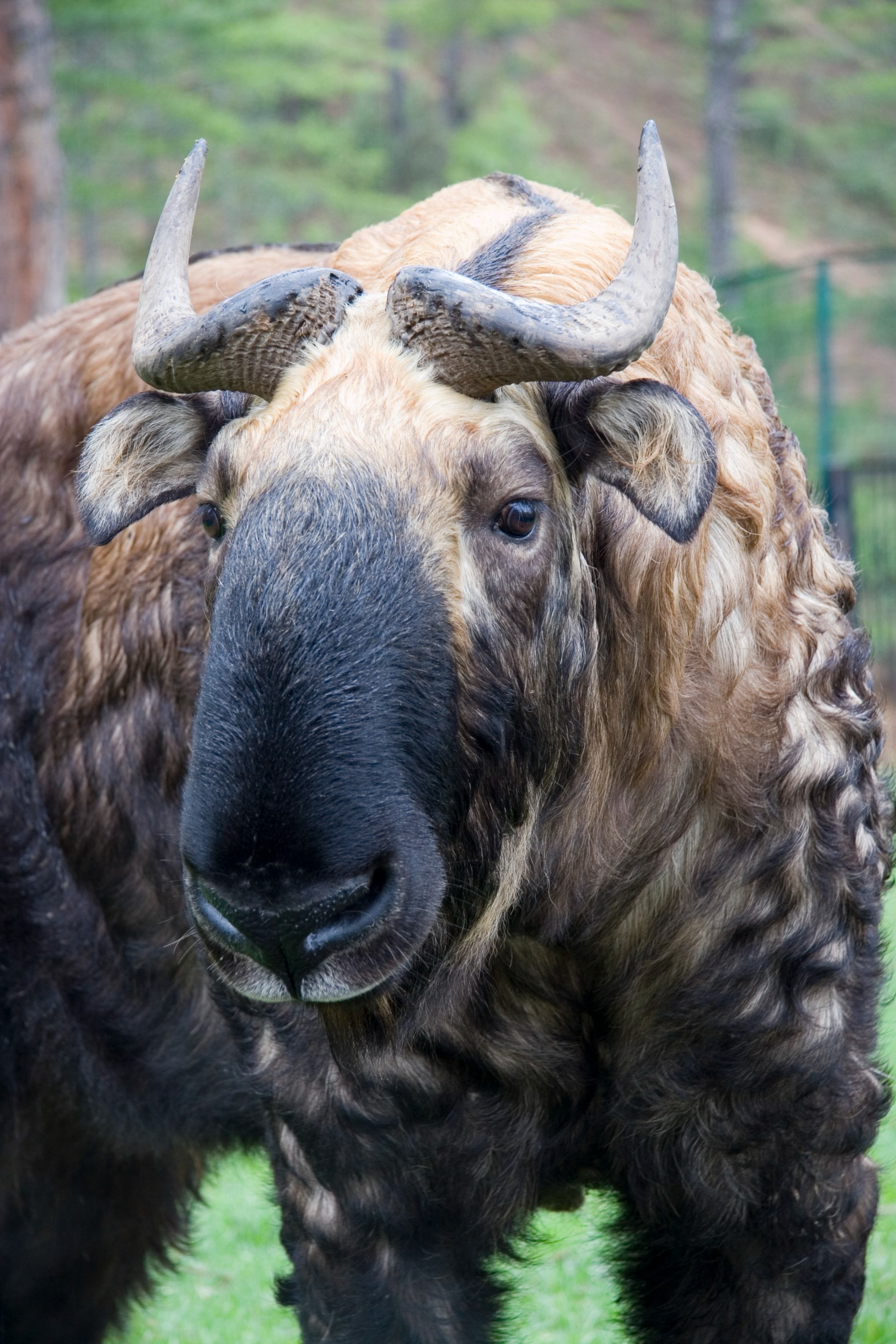
Bhutan-Takin
When I first laid eyes on the takin, the national animal of Bhutan, at an enclosure near the capital Thimphu, I was astonished. It looked like a creature straight out of mythology. How could such a large beast have escaped my attention? The takin looks like a bizarre cross between a wildebeest, an antelope, and a moose. It has a huge bulbous nose and backward-facing horns. Intrigued, I started digging. There was very little in print or media about this extraordinary mammal. I found out that takins migrate to higher altitudes in the rainy season to escape maddening insects like leeches, and this is also their mating period. So, I set about organizing an expedition to film wild takins. The result of that expedition led to publication in BBC Wildlife and a dozen other magazines. It seems they knew very little about this remarkable mammal either.
This trip sparked my passion for tracking high-altitude species—such as the Black-Necked Crane. This crane migrates from Tibet to winter in Bhutan annually. A festival held once a year at Gangtey Gompa is devoted to the Black-Necked Crane, regarded as highly auspicious. The festival features traditional songs about the birds—but the main event is choreography where young school kids imitate crane movements in a special dance.
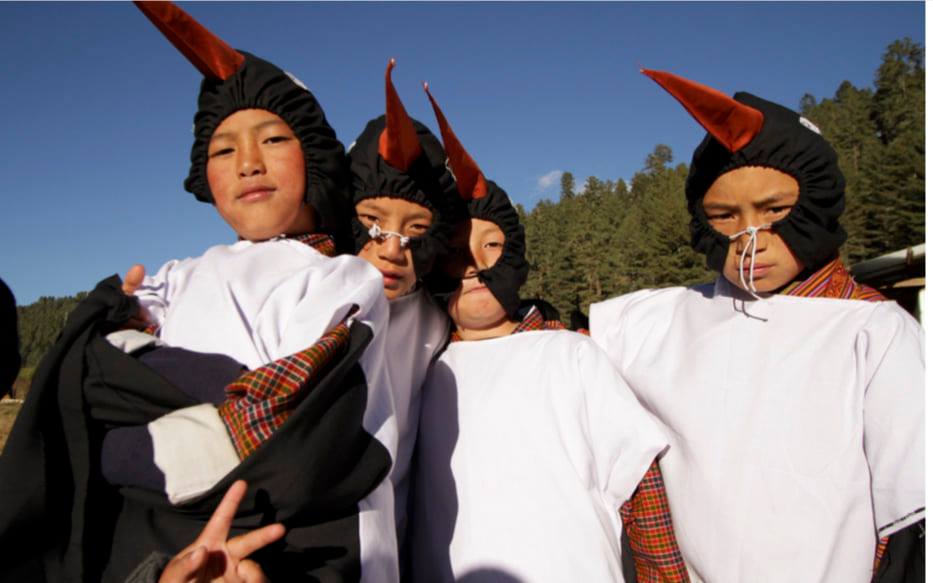
Crane-Dance
All in an effort to teach kids great respect for this species—and other species.
Finally, two editions of The Snow Leopard’s New Friend were published—one in English, the other in Tibetan. I have been inspired by many on this journey, and I hope that my book The Snow Leopard’s New Friend will, in turn, inspire 8-year-olds to get out there and help save these precious species—and the ecosystems that are essential for them to thrive. Because copies of my book are relatively cheap to print in India (the Tibetan language version of the book), I was able to arrange donations of class sets to Tibetan schools in India, Nepal, and Bhutan.
Bionote:
Michael Buckley tracked the national animal of Bhutan, the takin, in the wild to write a story for BBC Wildlife magazine. This sparked his long interest in researching other high-altitude species. Buckley is the author of Meltdown in Tibet and editor of This Fragile Planet: HH Dalai Lama on Environment. He is the filmmaker of four documentaries about environmental issues related to Tibet.
